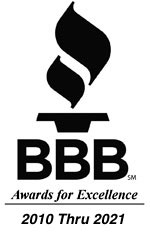 Lorena Distefano “We had a water leak in our kitchen that flooded our whole downstairs and Dry More came in and did an amazing job drying everything out. When you're dealing with such a stressful event it is good to work with a company that is very competent ...more
Lorena Distefano “We had a water leak in our kitchen that flooded our whole downstairs and Dry More came in and did an amazing job drying everything out. When you're dealing with such a stressful event it is good to work with a company that is very competent ...more
Water Damage Repair in Humid Climates
Article by David Selter
Water damage repair in humid climates can pose a challenge. Southwest Texas’ generally humid climate must be taken into account when planning the drying and repair of property with water damage.
The goal of the repairs is to dry out the structure and contents with minimal disruption. The demolition of wet material such as drywall and baseboards and removing wet carpet and padding should be avoided whenever possible. The cost and disruption of doing those things only adds to an already stressful situation for the property owner. So the goal of a water damage contractor should be restoring, not replacing.
Of course the most important thing is preventing the growth of microbes such as bacteria and old by drying out the structure and contents thoroughly. Mold problems associated with structures that have remained wet for too long are obvious to those living in a Gulf Coast city like Houston. Water damage repair should include whatever needed to dry out structures before microbial growth or other damage caused by the evaporation of water due to excess humidity occurs. If the water is “black” or contaminated, then infected items will need to be replaced. Those items could include carpet, padding, drywall, and insulation. Also, soaked ceiling drywall will be weakened and will need to be removed for safety. But if the water is not contaminated, most items except for wet drywall in the ceiling can be dried in place if the proper equipment is used.
What equipment is needed to dry wet structure and content without removing it?
1. If carpet is involved, you will need a water removal system capable of removing most of the water from the carpet and padding. New equipment is capable of doing just that. The machines are weighted and self-propelled, with the technician guiding them across the wet carpet slowly enough to make sure all of the excess water has been removed. The technician can determine this by watching the viewing windows in the machine’s vacuum tubing and staying in one place until no more water is being extracted.
2. Dehumidifiers that can remove enough moisture from the air to allow remaining water to rapidly evaporate are required. The new LGR dehumidifiers are ideal. LGR stands for “low grain refrigerant” and the dehumidifiers take out much more moisture from the air than older style refrigerant dehumidifiers that are still used.
3. High volume air movers are needed to enhance evaporation. Newer axial air movers can move 3,000 cubic feet of air per minute. The air flow is vital in the drying process, as it moves humid air away from wet surfaces and replaces it with drier air produced by the dehumidifiers. Air near wet surfaces becomes more humid due to evaporating water. The more often this air can be replaced with drier air, the faster wet structures and content dries, which is why new high volume air movers have significantly advanced drying technology.
So while a humid climate provides additional challenges for dealing with water damage, those can be overcome. Water damage repair can be handled with minimal disruption and cost if proper equipment and procedures are used.







